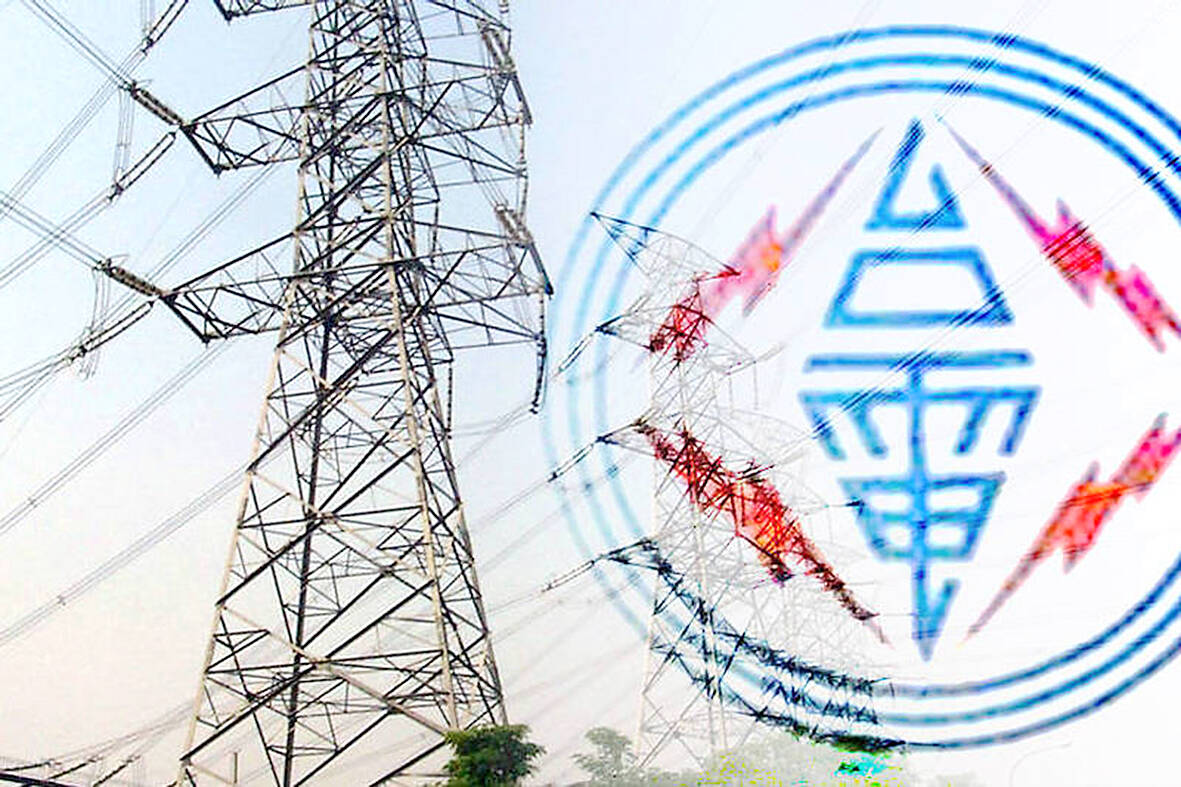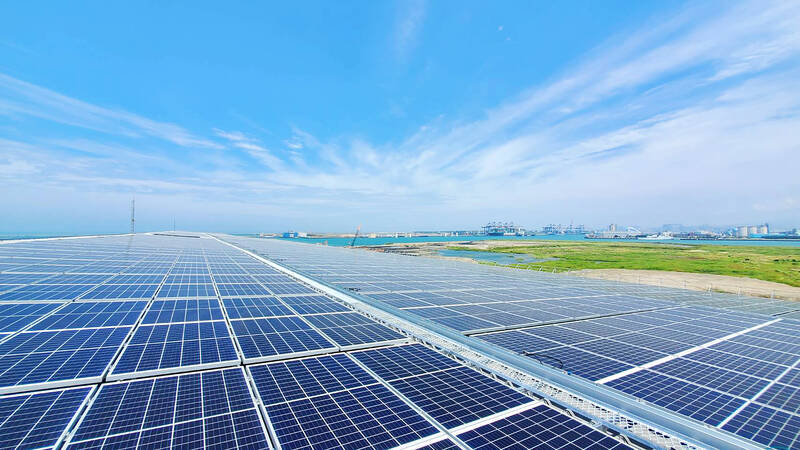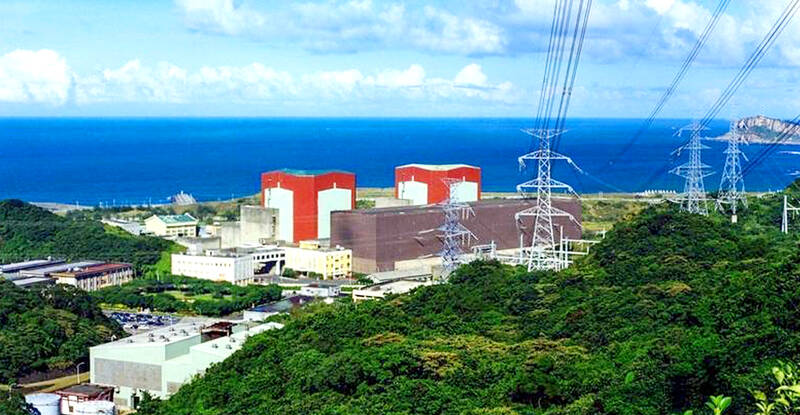Last week the Democratic Progressive Party (DPP) said that the budget cuts voted for by the China-aligned parties in the legislature, are intended to force the DPP to hike electricity rates. The public would then blame it for the rate hike.
It’s fairly clear that the first part of that is correct. Slashing the budget of state-run Taiwan Power Co (Taipower, 台電) is a move intended to cause discontent with the DPP when electricity rates go up. Taipower’s debt, NT$422.9 billion (US$12.78 billion), is one of the numerous permanent crises created by the nation’s construction-industrial state and the developmentalist mentality it fosters. Successive governments of both parties have done nothing to alter these fundamentals.
At the press conference last week, the DPP spokesman said legislators from the China-aligned Chinese Nationalist Party (KMT) and Taiwan People’s Party (TPP) slashed NT$200 billion from subsidies to the state-run company. Taipower reported losses of NT$198.5 billion (US$6.34 billion) in 2023, down from NT$267.5 billion (US$8.48 billion) in losses it reported for 2022. The 2023 losses were incurred even after receiving a NT$50 billion (US$1.57 billion) subsidy, while last year Taipower received a NT$100 billion (US$3.14 billion) subsidy to cover that year’s losses. It hiked rates that year.

Taipei Times file photo
The pro-PRC parties may criticize the DPP, blaming its anti-nuclear policies and renewables for the high cost of electricity, but the reality is that fossil fuel price hikes in the wake of the Ukraine war have driven electricity prices up. Ironically, its failure to ramp up renewables has left Taiwan heavily dependent on fossil fuels. The skyrocketing debt is directly traceable to Taipower’s rigid opposition to renewables. Taipower in fact is its own worst enemy.
Taipower officials often point to KEPCO, the Korean power utility, as its model for setting prices. KEPCO too has frozen prices, incurring massive debts. Just like Taipower, KEPCO also opposes renewables.
KEPCO might be the model, but the audience for Taipower’s destructive behavior is the Taipei-based business association, the Chinese National Federation of Industries (CNFI), which represents 159 local industries. CFNI argues that higher power rates impact the competitiveness of traditional sectors, which stay alive only because of direct and indirect subsidies. CFNI too invokes other nations in its complaints about increased electricity prices, claiming that it needs low electricity rates to fend off competition from southeast Asian nations.

Taipei Times file photo
‘RESERVE MARGINS’
An interesting 2018 paper in East Asian Science, Technology and Society: An International Journal by Chih-Yuan Yang, Bronislaw Szerszynski and Brian Wynne discusses the rhetoric used by Taipower, highlighting the problem the nation faces in thinking about electricity.
According to Yang et al, the idea of the “reserve margin” that Taipower has constructed and presented as a fact is in reality designed to shape — not inform — Taiwan’s power debates. Accepted across all participants, the question new power systems face is always: “is it a reasonable and sufficient reserve margin?” which then “produces no fertile outcome and fails to generate a reflection on the presumed rationality in current electricity planning.”

Photo courtesy of Taipower
The concept of “reserve margin” as an item of “factual certainty” rather than a fuzzy hypothetical as it is often treated in other nations, has consequences, Yang et al note. The “reserve margin” is a “part of statecraft which simplifies or even ignores uncertainty such as unplanned outages and delayed overhauls, as they are not itemized separately.”
Inherent in that is the way Taipower’s calculations for renewable energy have historically deprecated renewables.
“The entrenched planning practices originating from the incumbent generation technologies keep enacting the renewables as ‘immature’ technology,” they write.
Taipower hasn’t updated the way it thinks about renewables — it treats them as not ready and unreliable, a position it has held for years, preferring easily calculable systems like nuclear energy and fossil fuels. Despite Taipower’s preferences being publicly known, participants in the public debates tend to treat the data coming out of Taipower as neutral.
The result is the useless debate over energy, in which business and the pro-China parties line up behind nuclear power while Taipower piously claims its data show that renewables are bad and Taiwan’s power problems can only be solved by the application of nuclear power at a cost calculated by none other than Taipower itself. Its forecasting models are used routinely by academics and researchers, giving its constructs added legitimacy.
Taipower’s constantly iterated idea of a reserve margin is buttressed by its color system for representing the level of threat to the system. Fear gives an emotional punch to Taipower’s construct of the electricity system. The public, and the debates, respond in predictable ways.
PUBLIC OPINION
This brings us back to the second premise of the pro-China parties’ logic: will the public follow the KMT script?
An opinion poll released on March 18 by the anti-DPP Taiwan Public Opinion Foundation (TPOF) offers some interesting data on this question. If the reader wades through the poll’s incorrect framing — it falsely claims that the DPP “initiated a mass recall movement against opposition legislators” (civil society organizations were responsible for that) — the data shows that “among Taiwanese adults aged 20 years and older, 53 percent thought the cuts were inappropriate, while 27.5 percent said they were appropriate.” It appears that the public does have strong opinions and judging from the small slice of “don’t know,” is informed.
TPOF was compelled to concede that public opinion has shifted against the pro-China parties, though in TPOF’s world, 43.2 percent still blame the DPP for the problems with the legislature. The TPOF also finds that President William Lai’s (賴清德) approval runs at 48.9 percent, a number that would be the envy of most world leaders. Since that Lai question was preceded by a question asking if the public supported DPP “political boss” (he’s the party’s Caucus Whip) Ker Chien-ming’s (柯建銘) “recall” — a thing that does not exist — Lai’s solid figures are notable.
A Mirror Media poll from last month also shows a divided electorate, with 46.4 percent saying they support the recalls, and 44.5 percent against. Just over 9 percent did not express an opinion. Importantly, over 56 percent said they support the recall in the second stage, with 29 percent saying they would not. Over 70 percent said they would vote. Mirror had Lai at 51 percent satisfaction, similar to TPOF.
Coupled with the impressive number of anecdotes I am hearing from friends who tell me about their wife or uncle or friend who has never been political, but is super angry and voting in favor of recall, it is obvious that the extensive effort of civil society organizations is not only bringing out the public but educating them as well. Of course, they are tapping a deep well of anger.
All this implies that the public, by and large, is not going to blame the DPP if electricity prices go up. Rather, it is going to have mixed feelings and the KMT will take a hit, especially as the recall effort continues to shape public opinion.
In the short term the pro-Taiwan side can emphasize the KMT-TPP alliance’s role in creating budgetary chaos, but in the longer term the pro-Taiwan side is going to have to address Taipower’s longtime contempt for renewables.
Notes from Central Taiwan is a column written by long-term resident Michael Turton, who provides incisive commentary informed by three decades of living in and writing about his adoptive country. The views expressed here are his own.

The Taipei Times last week reported that the rising share of seniors in the population is reshaping the nation’s housing markets. According to data from the Ministry of the Interior, about 850,000 residences were occupied by elderly people in the first quarter, including 655,000 that housed only one resident. H&B Realty chief researcher Jessica Hsu (徐佳馨), quoted in the article, said that there is rising demand for elderly-friendly housing, including units with elevators, barrier-free layouts and proximity to healthcare services. Hsu and others cited in the article highlighted the changing family residential dynamics, as children no longer live with parents,

Oct 20 to Oct 26 After a day of fighting, the Japanese Army’s Second Division was resting when a curious delegation of two Scotsmen and 19 Taiwanese approached their camp. It was Oct. 20, 1895, and the troops had reached Taiye Village (太爺庄) in today’s Hunei District (湖內), Kaohsiung, just 10km away from their final target of Tainan. Led by Presbyterian missionaries Thomas Barclay and Duncan Ferguson, the group informed the Japanese that resistance leader Liu Yung-fu (劉永福) had fled to China the previous night, leaving his Black Flag Army fighters behind and the city in chaos. On behalf of the

I was 10 when I read an article in the local paper about the Air Guitar World Championships, which take place every year in my home town of Oulu, Finland. My parents had helped out at the very first contest back in 1996 — my mum gave out fliers, my dad sorted the music. Since then, national championships have been held all across the world, with the winners assembling in Oulu every summer. At the time, I asked my parents if I could compete. At first they were hesitant; the event was in a bar, and there would be a lot

Smart speakers are a great parenting crutch, whether it be for setting a timer (kids seem to be weirdly obedient to them) or asking Alexa for homework help when the kids put you on the spot. But reader Katie Matthews has hacked the parenting matrix. “I used to have to nag repeatedly to get the kids out of the house,” she says. “Now our Google speaker announces a five-minute warning before we need to leave. They know they have to do their last bits of faffing when they hear that warning. Then the speaker announces, ‘Shoes on, let’s go!’ when